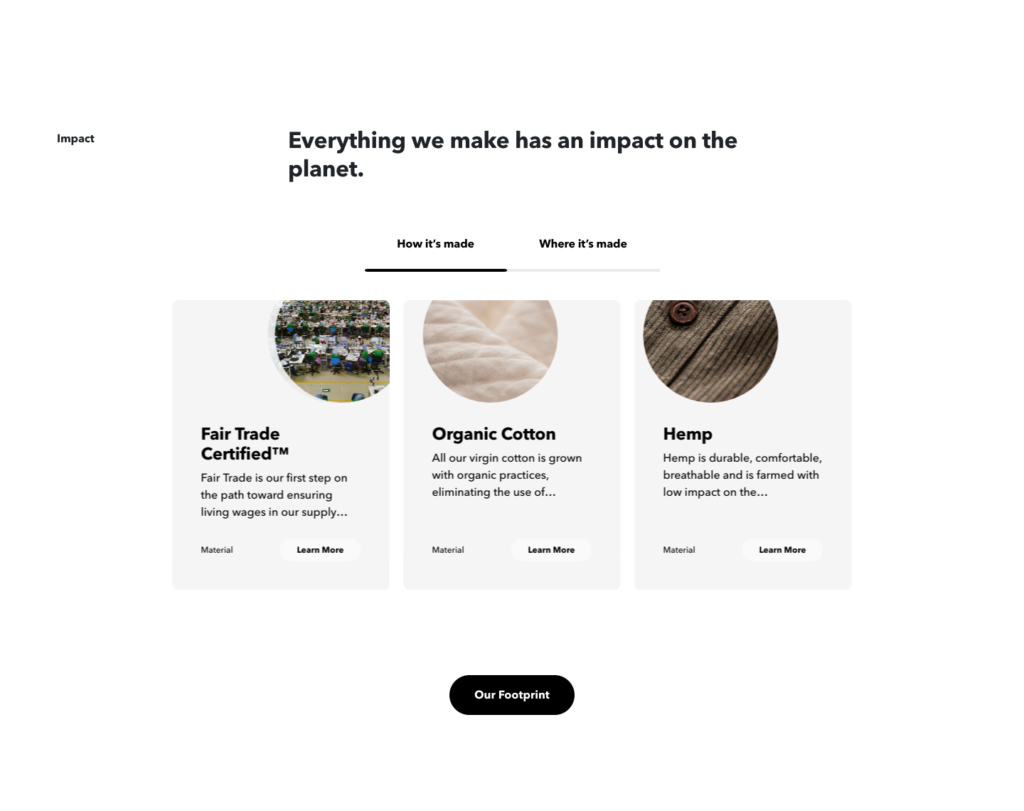When it comes to successes, most companies are eager to broadcast them to the world. But if you mention sharing any other type of information — such as their processes and failures — they’re just as eager to bite their tongues.
Withholding this kind of information is somewhat understandable, though. Every business leader wants to cast their company in the best light possible. And consumers who continuously hear about a company’s achievements might hold them in high regard and consider them the cream of the crop.
However, if they hear even the softest murmurs about any improper employee treatment or a botched initiative, the brand affinity and trust that took the company years to build could plummet in an instant.
But, despite these risks, adopting a culture of transparency could become your business’ unfair advantage, especially in a world where only 34% of consumers report that they trust most of the brands they buy products from.
Read on to learn why your company should strive for complete transparency, how three of the world’s most innovative companies are leading the charge in corporate transparency today, and how your business can start becoming more transparent today.
What is transparency in business?
Transparency in business is publicizing a company’s internal information externally. The kind of business information can include:
- Financial performance
- Pricing
- Key processes
- Hiring practices
- Diversity and inclusion data
Sharing all of this information keeps companies accountable with their customers and, most importantly, pushes them to follow ethical business practices.
Why is transparency crucial for business?
Nowadays, people don’t just buy your product or services — they also buy what you stand for. According to Edelman’s 2019 Brand Trust Survey, 81% of survey respondents reported that they “must be able to trust the brand to do what is right” to justify their purchase of the brand’s products or services.
But how exactly do you gain people’s trust, especially when the majority of consumers are skeptical of a lot of brands’ true intentions? A crucial first step to take is to fully commit to transparency. People value transparency because we evolved to trust the people who are honest and despise those who are deceptive. The former could help us survive. The latter could do the very opposite.
Of course, getting duped isn’t as high-stakes anymore. But companies that deceive the public can still leave a putrid taste in consumers’ mouths and potentially prompt them to sever their relationship with that brand forever. In fact, 45% of consumers report that a brand that behaves unethically or suffers a controversy will never be able to regain their trust.
In a nutshell, people buy brands — not just products — and practicing transparency helps build their trust and affinity for your company. But this begs the question — what does that actually look like?
What does transparency in business look like?
To show you what transparency in business looks like, here’s a rundown of how three companies are leading the charge right now.

Patagonia
In December 2018, Patagonia took its fight against climate change to another level. They decided to change their mission statement from “Build the best product, cause no unnecessary harm, use business to inspire, and implement solutions to the environmental crisis” to “Patagonia is in business to save our home planet.”
But Patagonia knew they couldn’t just tell people that they were mission-driven. The company had to show customers that they were mission-driven.
To prove that they walked the talk, Patagonia built an entire webpage dedicated to its global footprint. On the page, the company publicly displays programs for and progress toward its own environmental responsibility, social responsibility, and supply chain goals. Patagonia also regularly posts updates on all their new and ongoing environmental and social initiatives.

Additionally, on each of its product pages, Patagonia publicly displays how they made each product, the materials they used, and where they made it. This not only gives customers complete transparency into Patagonia’s global footprint, but it also gives them insight into their own global footprint.

Thankfully, Patagonia’s mission to save Earth isn’t watered down by an ulterior motive to profit. But, interestingly enough, that’s exactly what it’s done.
“We’ve found that when we put the planet first and do the right things for the planet, it winds up being good for business,” said Corley Kenna, Patagonia’s Director of Global Communications and Public Relations, in an interview with Forbes. “It has proven itself over and over again.”

Zappos
One of Zappos’ core values is “Build Open and Honest Relationships With Communication.” So, to put their money where their mouth is, Zappos decided to blaze a trail in corporate transparency — build an extranet that gives vendors complete visibility into the business.
In retail, buyers usually hoard information like their pricing models from vendors so they can purchase the vendor’s products at the cheapest prices possible. And since vendors can only sell their products to so many retailers, this gives buyers all the leverage.
So, why would Zappos give it up? Well, the company realized that if vendors knew as much about Zappos’ business as their buyers did, the company could build more trust, develop healthier relationships with vendors, and ultimately generate higher revenue and profits.
To explain further, the average Zappo’s buyer works with 50 brands. So, giving vendors complete transparency into the business helps gain the trust of countless amounts of brands.
Think about it: if Zappos gives vendors complete visibility into their pricing models, then vendors know exactly how much Zappos can afford to spend on their products. So, who do you think vendors will trust more? A different buyer who hoards the same information and will likely low-ball them? Or Zappos?
Selling their products to Zappos at a fair price then allows vendors to turn a higher profit. As a result, more vendors want to do business with Zappos, which allows the company to offer a better mix of products to customers than their competitors can. Zappos can also earn a discount on some orders, depending on their relationship with vendors.

Buffer
At the very top of Buffer’s list of values is “Default to transparency.” One of the most famous ways the company has achieved transparency is by publicizing all their employees’ salaries and equity shares and the formulas that determine each employee’s salary and equity.
Buffer showed the world that it’s committed to compensating their employees fairly. And this remarkable transparency has bred trust both inside and outside the company, helping them generate over $22 million in annual revenue, attract over 73,000 customers, and raise almost $4 million in venture capital.
Buffer also publicly shares its financial performance, fundraising performance, product roadmap, diversity data, hiring practices, and more to honor its commitment to transparency.

How can your company become more transparent?
Transparency requires an enormous amount of dedication. You’re either all in or all out. Because if you really think about it, being mostly transparent isn’t being transparent at all.
To help you get there, here are three steps you can to take to adopt a culture of transparency today.
Make Sure You’re Internally Transparent
Transparency starts from within. So, if you decide to publicize all of your actions to the world, make sure you publicize them to your employees first. You don’t want your workers to uncover internal information about your company through the grapevine. This can catch them off guard and make your transparency efforts seem like an insincere marketing scheme.
One of the most effective ways to scale internal transparency at your company is to document key learnings, processes, and initiatives in your internal knowledge base. This way, everyone can instantly access crucial information about your business at any time and place. Plus, you only need to document this information once rather than answering the same question over and over again.
Make Transparency One of Your Core Values
Choosing transparency as one of their core values forced Zappos and Buffer to truly become a transparent company. They had to walk the talk, or else they’d be hypocrites. Doing the same will also push you to put your money where your mouth is.
To make transparency one of your core values, pitch its benefits to your executive team. Then, break down any barriers one step at a time. So, instead of immediately sharing all of your internal information to the world, share it with your employees first. Then, when you’ve refined the way your brand conveys information, share your pricing, then financial performance, then key processes, etc.
Publicize Your Actions and Progress
Patagonia’s mission statement doesn’t mention anything explicit about being transparent. But by demonstrating its actions and the progress it’s making toward accomplishing that mission, Patagonia has inherently become a transparent company.
This is another effective method you can leverage to improve your company’s transparency: Set a clear mission, show the world what you’re doing to actually accomplish it, and publicize your progress on your website, blog, and/or social media, like Patagonia does. This can separate you from the companies that lure people in with a rosy mission statement, only to bait-and-switch them immediately after they set the hook.
Being mostly transparent isn’t being transparent at all.
A lot of companies say they’re transparent. But, when push comes to shove, only a few will still be on their feet. Stand with the likes of Patagonia, Zappos, and Buffer. Their reputation and bottom line are happy they did. And yours will be too.


